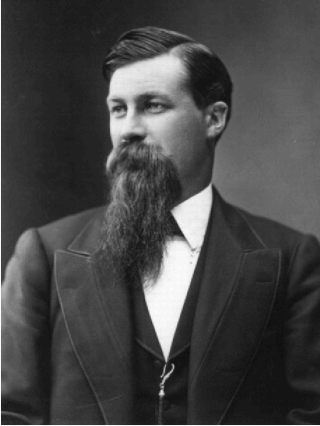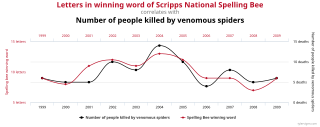Related Research Articles
Biostatistics are the development and application of statistical methods to a wide range of topics in biology. It encompasses the design of biological experiments, the collection and analysis of data from those experiments and the interpretation of the results.

Statistics is the discipline that concerns the collection, organization, analysis, interpretation, and presentation of data. In applying statistics to a scientific, industrial, or social problem, it is conventional to begin with a statistical population or a statistical model to be studied. Populations can be diverse groups of people or objects such as "all people living in a country" or "every atom composing a crystal". Statistics deals with every aspect of data, including the planning of data collection in terms of the design of surveys and experiments.

The scientific method is an empirical method for acquiring knowledge that has characterized the development of science since at least the 17th century It involves careful observation, applying rigorous skepticism about what is observed, given that cognitive assumptions can distort how one interprets the observation. It involves formulating hypotheses, via induction, based on such observations; the testability of hypotheses, experimental and the measurement-based statistical testing of deductions drawn from the hypotheses; and refinement of the hypotheses based on the experimental findings. These are principles of the scientific method, as distinguished from a definitive series of steps applicable to all scientific enterprises.
A statistical hypothesis test is a method of statistical inference used to decide whether the data at hand sufficiently support a particular hypothesis. Hypothesis testing allows us to make probabilistic statements about population parameters.
Confirmation bias is the tendency to search for, interpret, favor, and recall information in a way that confirms or supports one's prior beliefs or values. People display this bias when they select information that supports their views, ignoring contrary information, or when they interpret ambiguous evidence as supporting their existing attitudes. The effect is strongest for desired outcomes, for emotionally charged issues, and for deeply entrenched beliefs. Confirmation bias cannot be eliminated, but it can be managed, for example, by education and training in critical thinking skills.
Scientific evidence is evidence that serves to either support or counter a scientific theory or hypothesis, although scientists also use evidence in other ways, such as when applying theories to practical problems. Such evidence is expected to be empirical evidence and interpretable in accordance with the scientific method. Standards for scientific evidence vary according to the field of inquiry, but the strength of scientific evidence is generally based on the results of statistical analysis and the strength of scientific controls.
In scientific research, the null hypothesis is the claim that no relationship exists between two sets of data or variables being analyzed. The null hypothesis is that any experimentally observed difference is due to chance alone, and an underlying causative relationship does not exist, hence the term "null". In addition to the null hypothesis, an alternative hypothesis is also developed, which claims that a relationship does exist between two variables.
The hypothetico-deductive model or method is a proposed description of the scientific method. According to it, scientific inquiry proceeds by formulating a hypothesis in a form that can be falsifiable, using a test on observable data where the outcome is not yet known. A test outcome that could have and does run contrary to predictions of the hypothesis is taken as a falsification of the hypothesis. A test outcome that could have, but does not run contrary to the hypothesis corroborates the theory. It is then proposed to compare the explanatory value of competing hypotheses by testing how stringently they are corroborated by their predictions.
In null-hypothesis significance testing, the p-value is the probability of obtaining test results at least as extreme as the result actually observed, under the assumption that the null hypothesis is correct. A very small p-value means that such an extreme observed outcome would be very unlikely under the null hypothesis. Even though reporting p-values of statistical tests is common practice in academic publications of many quantitative fields, misinterpretation and misuse of p-values is widespread and has been a major topic in mathematics and metascience. In 2016, the American Statistician Association (ASA) made a formal statement that "p-values do not measure the probability that the studied hypothesis is true, or the probability that the data were produced by random chance alone" and that "a p-value, or statistical significance, does not measure the size of an effect or the importance of a result" or "evidence regarding a model or hypothesis." That said, a 2019 task force by ASA has issued a statement on statistical significance and replicability, concluding with: "p-values and significance tests, when properly applied and interpreted, increase the rigor of the conclusions drawn from data."

Thomas Chrowder Chamberlin was an American geologist and educator. In 1893 he founded the Journal of Geology, of which he was editor for many years.

Mathematical statistics is the application of probability theory, a branch of mathematics, to statistics, as opposed to techniques for collecting statistical data. Specific mathematical techniques which are used for this include mathematical analysis, linear algebra, stochastic analysis, differential equations, and measure theory.
This timeline of the history of the scientific method shows an overview of the development of the scientific method up to the present time. For a detailed account, see History of the scientific method.

In statistics, the multiple comparisons, multiplicity or multiple testing problem occurs when one considers a set of statistical inferences simultaneously or infers a subset of parameters selected based on the observed values.
Statistics is a scientific field that deals with data. It utilizes data to solve practical problems and analyzes collected data in order to draw conclusions. Different approaches to analyzing the same data can lead to different conclusions. For example, weather forecasts can vary among different forecasting agencies. Conclusions drawn from statistical analysis often involve uncertainty as they represent the probability of an event occurring. For instance, a weather forecast indicating a 90% probability of rain would classify it as likely to rain, while a 5% probability would suggest it is unlikely to rain. The actual outcome, whether it rains or not, can only be determined afterwards.
Statistical proof is the rational demonstration of degree of certainty for a proposition, hypothesis or theory that is used to convince others subsequent to a statistical test of the supporting evidence and the types of inferences that can be drawn from the test scores. Statistical methods are used to increase the understanding of the facts and the proof demonstrates the validity and logic of inference with explicit reference to a hypothesis, the experimental data, the facts, the test, and the odds. Proof has two essential aims: the first is to convince and the second is to explain the proposition through peer and public review.

The psychology of reasoning is the study of how people reason, often broadly defined as the process of drawing conclusions to inform how people solve problems and make decisions. It overlaps with psychology, philosophy, linguistics, cognitive science, artificial intelligence, logic, and probability theory.

A hypothesis is a proposed explanation for a phenomenon. For a hypothesis to be a scientific hypothesis, the scientific method requires that one can test it. Scientists generally base scientific hypotheses on previous observations that cannot satisfactorily be explained with the available scientific theories. Even though the words "hypothesis" and "theory" are often used interchangeably, a scientific hypothesis is not the same as a scientific theory. A working hypothesis is a provisionally accepted hypothesis proposed for further research in a process beginning with an educated guess or thought.
A working hypothesis is a hypothesis that is provisionally accepted as a basis for further ongoing research in the hope that a tenable theory will be produced, even if the hypothesis ultimately fails. Like all hypotheses, a working hypothesis is constructed as a statement of expectations, which can be linked to deductive, exploratory research in empirical investigation and is often used as a conceptual framework in qualitative research. The term "working" indicates that the hypothesis is subject to change.
For other people named John Platt, see John Platt.
Intuitive statistics, or folk statistics, refers to the cognitive phenomenon where organisms use data to make generalizations and predictions about the world. This can be a small amount of sample data or training instances, which in turn contribute to inductive inferences about either population-level properties, future data, or both. Inferences can involve revising hypotheses, or beliefs, in light of probabilistic data that inform and motivate future predictions. The informal tendency for cognitive animals to intuitively generate statistical inferences, when formalized with certain axioms of probability theory, constitutes statistics as an academic discipline.
References
- ↑ John R. Platt (1964). "Strong inference". Science. 146 (3642): 347–53. Bibcode:1964Sci...146..347P. doi:10.1126/science.146.3642.347. PMID 17739513.
- 1 2 3 Don L. Jewett (1 January 2005). "What's wrong with single hypotheses? Why it is time for Strong-Inference-PLUS". Scientist (Philadelphia, Pa.). 19 (21): 10. PMC 2048741 . PMID 17975652.
- ↑ Haken, Hermann (28 January 2011). "Grey Information: Theory and Practical Applications". Grey Systems: Theory and Application. 1 (1): 105–106. doi:10.1108/gs.2011.1.1.105.1. ISSN 2043-9377.
- ↑ Ju-Long, Deng (March 1982). "Control problems of grey systems". Systems & Control Letters. 1 (5): 288–294. doi:10.1016/S0167-6911(82)80025-X.
- ↑ Javed, Saad Ahmed; Mahmoudi, Amin; Liu, Sifeng (June 2020). "Grey Absolute Decision Analysis (GADA) Method for Multiple Criteria Group Decision-Making Under Uncertainty". International Journal of Fuzzy Systems. 22 (4): 1073–1090. doi:10.1007/s40815-020-00827-8. ISSN 1562-2479.
- ↑ O'Donohue, William; Buchanan, Jeffrey A. (2001). "The weaknesses of strong inference". Behavior and Philosophy. Cambridge Center for Behavioral Studies. 29: 1–20.
- ↑ Rowland H. Davis (2006). "Strong Inference: rationale or inspiration?". Perspectives in Biology and Medicine. 49 (2): 238–250. doi:10.1353/pbm.2006.0022. PMID 16702707.